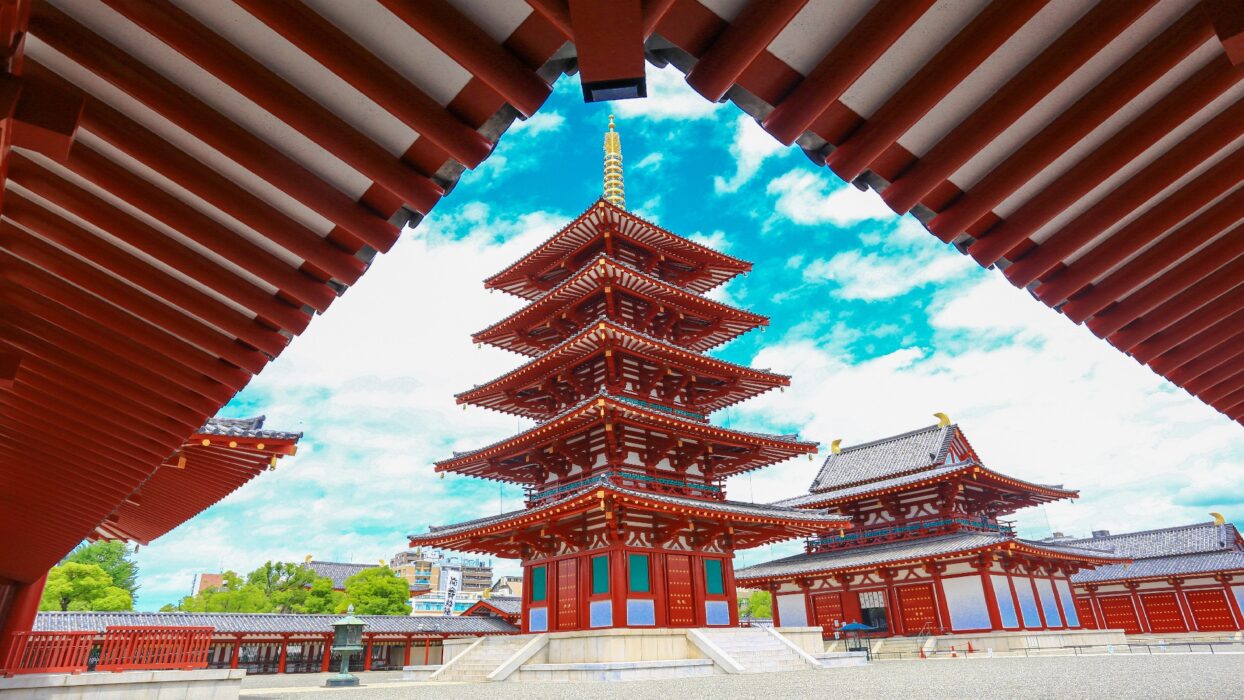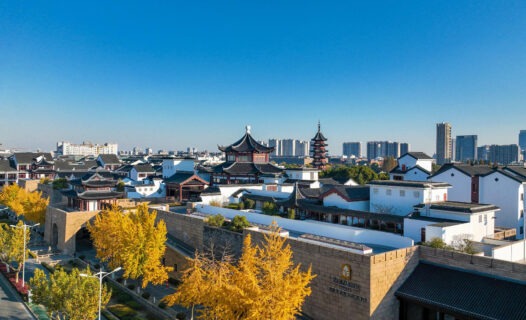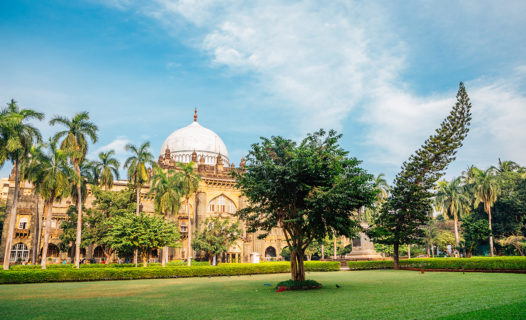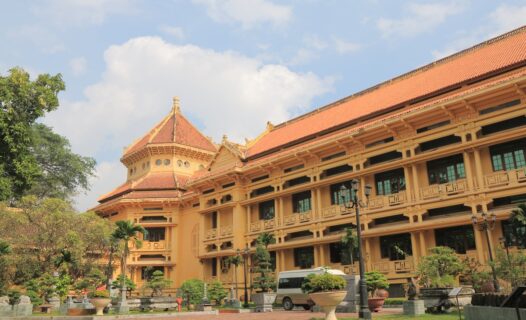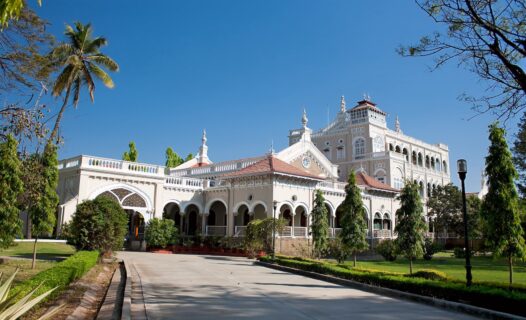Introduction
Welcome to Kyoto, a city where ancient traditions and modernity blend seamlessly, creating an enchanting atmosphere that captivates every traveler. Among its many treasures lies the Gion District, Kyoto’s iconic geisha heart. This area is not just a picturesque location; it’s a vibrant cultural hub steeped in history and tradition. As you stroll through its charming streets, you’ll discover the allure of geisha culture, which has thrived here for centuries, captivating the hearts of locals and visitors alike.
What makes Gion truly special is its seasonal charm. Each time of year brings a unique beauty, from the cherry blossoms in spring to the vibrant hues of autumn leaves. Festivals throughout the year celebrate this rich heritage, offering visitors a chance to immerse themselves in the captivating world of geisha. Whether you’re here to witness a traditional tea ceremony or to experience the magic of a geisha performance, Gion promises enchanting experiences at every turn.
Discovering the Enchanting Gion District: Kyoto’s Geisha Heart
Stepping into the Gion District is like stepping back in time. With its narrow streets lined with wooden machiya houses and lantern-lit pathways, Gion exudes a charm that feels untouched by modernity. Historically, this area served as a hub for geisha culture, where skilled entertainers, known as geiko (the term used in Kyoto), and their apprentices, the maiko, would entertain guests with music, dance, and conversation.
The roots of Gion can be traced back to the 7th century when it began as a place for travelers visiting the nearby Yasaka Shrine. Over the centuries, it evolved into a vibrant geisha district, attracting patrons from all over Japan. The unique blend of hospitality and artistry found here is a testament to Kyoto’s commitment to preserving its cultural heritage. Today, Gion remains a living museum of geisha culture, offering visitors a glimpse into the intricate world of these talented performers.
As you explore Gion, you’ll find that the geisha culture is not just a relic of the past; it’s a thriving art form that continues to evolve. The rigorous training process that maiko undergo involves mastering traditional dance, music, and tea ceremony etiquette, ensuring that this age-old craft is passed down through generations. To truly appreciate the beauty of Gion and its geisha culture, consider visiting during one of the many seasonal festivals celebrated throughout the year.
Seasonal Festivals in Kyoto: A Calendar of Cultural Celebrations
Kyoto’s calendar is filled with vibrant festivals that celebrate its rich cultural heritage, particularly those that shine a spotlight on the geisha community. These events are a feast for the senses, filled with traditional music, dance, and colorful processions. Here are some of the key seasonal festivals that you won’t want to miss:
Gion Matsuri: The Pinnacle of Kyoto Festivals
One of the most famous festivals in Japan, the Gion Matsuri takes place every July and is a celebration of the Gion District’s patron deity, Yasaka Shrine. This month-long festival features stunning floats, known as yamaboko, which are paraded through the streets, accompanied by traditional music and dance. The highlight is the grand procession on July 17, where beautifully decorated floats glide through the city, showcasing the artistry and craftsmanship of Kyoto’s artisans.
Heian Jingu Reisai: A Celebration of Tradition
Held in mid-October at the Heian Shrine, the Heian Jingu Reisai is a vibrant festival that honors the spirits of the shrine. Visitors are treated to stunning displays of traditional costumes, including those worn by geiko and maiko. The highlight of the festival is the procession of elegantly dressed participants, who recreate the atmosphere of the Heian period, making it a must-see for anyone interested in Kyoto’s history and culture.
Kamogawa Odori: Dance of the Maiko
Every May, the Kamogawa Odori showcases the talents of Kyoto’s maiko and geiko in a mesmerizing dance performance along the banks of the Kamo River. This event is a rare opportunity to see these skilled performers in action, as they present traditional dances that have been passed down through generations. The performances are accompanied by live music, creating an enchanting atmosphere that captures the essence of Kyoto’s geisha culture.
Attending these festivals not only provides a unique cultural experience but also offers a chance to witness the beauty of Gion in its most festive form. Mark your calendars and prepare to be swept away by the charm of Kyoto’s seasonal celebrations!
Immersive Kyoto Tea Ceremony Experiences: Sipping Tradition
When in Kyoto, indulging in a traditional tea ceremony is a must! This serene experience immerses you in the rich culture of Japan, where every sip of matcha tells a story. The tea ceremony, or chanoyu, is more than just about drinking tea; it’s a beautiful ritual that embodies harmony, respect, purity, and tranquility.
Traditional Tea Houses: The Heart of Tea Culture
Kyoto is home to numerous tea houses, each offering a unique atmosphere and experience. One of the most famous is En, nestled in the heart of Gion. Here, you can enjoy a traditional tea ceremony led by a skilled tea master, who will guide you through the intricate process of preparing and serving matcha. The ambiance is serene, with tatami mats and beautiful garden views that transport you to another time.
Another gem is Kodaiji Temple Tea House, where you can sip tea surrounded by stunning temple gardens. Each tea house has its own charm, making it worthwhile to explore a few during your visit. Be sure to check their schedules, as some tea houses offer special seasonal ceremonies that showcase the beauty of nature alongside the art of tea.
Tea Ceremony Etiquette: What You Need to Know
Participating in a tea ceremony comes with its own set of etiquettes, which adds to the experience. Here are a few tips to keep in mind:
- Respect the Ritual: Observe the movements of the tea master and follow their lead. It’s all about appreciating the moment.
- Receive the Tea Graciously: When handed a bowl of tea, hold it with both hands and bow slightly as a sign of gratitude.
- Enjoy the Experience: Take your time to savor the flavors and aromas. This is a moment of peace and reflection.
Booking Your Tea Ceremony Experience
Booking a tea ceremony can be done easily online. Many tea houses offer packages that include a traditional meal, allowing you to enjoy a full cultural experience. It’s a good idea to reserve in advance, especially during peak seasons like cherry blossom time or autumn foliage, as spots fill up quickly.
Nighttime Wonders: Exploring Kyoto’s Geisha District After Dark
As the sun sets, Gion transforms into a magical realm filled with twinkling lanterns and the soft sound of shamisen music wafting through the air. The nighttime in Gion offers a unique perspective on the geisha culture, making it a delightful adventure for night owls and culture enthusiasts alike!
Geisha Performances: An Evening of Artistry
One of the highlights of an evening in Gion is witnessing a live geisha performance. Many teahouses host these events, where you can enjoy traditional music and dance. It’s a rare opportunity to see the grace and skill of geiko and maiko up close. Make sure to book your tickets in advance, as these performances are quite popular!
Dining with Geisha: A Unique Culinary Experience
For a truly unforgettable night, consider dining at a restaurant where you can enjoy a kaiseki meal served by a geisha. This multi-course dining experience showcases the best of Kyoto’s seasonal ingredients, all while being entertained by the artistry of your host. Restaurants like Gion Karyo and Gion Nanba are renowned for their exceptional cuisine and the chance to interact with geiko and maiko, making for a memorable evening.
Night Tours: Discovering Gion by Lantern Light
Want to soak in the ambiance of Gion after dark? Join a guided night tour! These tours often take you through the lantern-lit streets, sharing stories of the district’s rich history and the lives of its geisha. You’ll discover hidden gems and learn about the traditions that have shaped this enchanting area. Plus, it’s a fantastic way to capture stunning nighttime photos of the beautifully preserved architecture.
Cultural Immersion: Engaging with Geiko and Maiko
To truly appreciate Kyoto’s geisha culture, engaging with geiko and maiko is an experience like no other. Their lives are steeped in tradition, and understanding their journey can deepen your appreciation for this art form.
The Journey of Becoming a Maiko
Becoming a maiko is a rigorous process filled with dedication and discipline. Young girls, often starting as apprentices at around 15 years old, undergo extensive training in traditional dance, music, and tea ceremony etiquette. They wear stunning kimonos and elaborate hairstyles adorned with vibrant hairpieces, making them a sight to behold as they gracefully move through Gion.
Distinctions Between Geiko and Maiko
While both geiko and maiko are integral to Kyoto’s culture, they represent different stages in the geisha hierarchy. Maiko are apprentices, often characterized by their colorful kimonos and elaborate hairstyles, while geiko are fully qualified geisha who wear more subdued kimonos and simpler hairstyles. Understanding these distinctions enriches your experience as you encounter these talented performers.
Cultural Workshops: Learning Traditional Arts
If you’re eager to dive deeper into the arts of Kyoto, consider participating in a cultural workshop. Many places in Gion offer classes where you can learn traditional arts such as kimono wearing, calligraphy, or even shamisen playing. These hands-on experiences allow you to connect with the culture in a meaningful way, and you might even get to meet a maiko or geiko during your session!
Day-by-Day Itinerary: Crafting Your Kyoto Geisha Experience
Planning your geisha experience in Kyoto? Here’s a suggested three-day itinerary that will help you soak up all the beauty, culture, and culinary delights Gion has to offer!
Day 1: Gion Exploration and Tea Ceremony
Start your journey by wandering through the charming streets of Gion. Visit the Yasaka Shrine and take in the serene atmosphere. In the afternoon, treat yourself to a traditional tea ceremony at one of the local tea houses. This is the perfect way to unwind and appreciate the art of tea!
Day 2: Evening Performance and Dinner with a Geisha
On your second day, spend the morning exploring nearby attractions like Kiyomizu-dera Temple. In the evening, enjoy a kaiseki dinner while being entertained by a geisha performance. This will be a highlight of your trip, combining exquisite food with captivating artistry!
Day 3: Cultural Workshops and Local Cuisine
Round off your Kyoto adventure with a cultural workshop in the morning, where you can learn a traditional art. Afterward, explore Gion’s culinary scene by sampling local street food or dining at a traditional restaurant. Don’t forget to try the famous yudofu (tofu hot pot)!
Culinary Deep Dive: Savoring Kyoto’s Local Flavors
No trip to Kyoto is complete without indulging in its exquisite local cuisine! The city is renowned for its culinary traditions, and Gion is the perfect place to explore them.
Kaiseki: The Art of Japanese Dining
Kaiseki dining is a multi-course meal that showcases seasonal ingredients and meticulous presentation. Each dish is a work of art, reflecting the changing seasons and the chef’s skill. Restaurants like Gion Karyo offer unforgettable kaiseki experiences that will leave your taste buds dancing!
Street Food Delights in Gion
If you prefer a more casual dining experience, Gion’s streets are lined with food stalls offering delicious street food. Try yatsuhashi, a sweet rice snack, or yakitori, grilled chicken skewers that are simply irresistible. Sampling these local delights is a fun way to experience Kyoto’s culinary scene!
Best Restaurants for Geisha Dining Experiences
For an authentic geisha dining experience, consider booking a meal at a restaurant that hosts geiko or maiko. Gion Nanba is known for its warm hospitality and exceptional cuisine. Dining here while being entertained by a geisha is an experience you won’t forget!
Practical Information for Travelers: Tips for a Smooth Experience
As you prepare for your adventure in Kyoto, here are some practical tips to make your experience as smooth as possible!
Opening Hours for Tea Houses and Performances
Most tea houses and performance venues have specific opening hours, so it’s wise to check in advance. Generally, tea houses open around 10 AM and close by 5 PM, while evening performances usually start around 6 PM. Planning your day around these hours will help you make the most of your time!
Booking Tips for Festivals and Experiences
For the best experience, book your tickets for festivals and performances in advance. This is especially important during peak seasons when demand is high. Many venues offer online booking, making it easy to secure your spot!
Transportation: Getting Around Kyoto
Kyoto has an efficient public transportation system that makes getting around a breeze. The bus and subway networks are extensive, and many attractions in Gion are within walking distance. Consider purchasing a day pass for unlimited travel, which can save you both time and money!
Fun Facts about Kyoto’s Geisha Culture
Did you know that the tradition of geisha dates back to the 18th century? Here are some fun facts that might surprise you:
- Geiko, the term for geisha in Kyoto, translates to “woman of the arts,” reflecting their dedication to performing arts.
- Maiko typically wear colorful kimonos and elaborate hairstyles, while geiko wear more subdued colors and simpler styles.
- The iconic white make-up worn by geiko and maiko is not just for aesthetics; it symbolizes their commitment to the arts and their role as entertainers.
Sustainability and Conservation: Supporting Kyoto’s Heritage
As you enjoy your time in Kyoto, consider supporting sustainable tourism practices. Many tea houses and restaurants are now adopting eco-friendly practices, from sourcing local ingredients to reducing waste.
Eco-Friendly Practices in Tea Houses
Look for tea houses that promote sustainable practices, such as using organic tea leaves and biodegradable utensils. By choosing these options, you can enjoy your tea ceremony while also supporting the environment!
Supporting Local Artisans and Crafts
Purchasing handmade crafts and souvenirs from local artisans is a great way to support Kyoto’s cultural heritage. From beautifully crafted ceramics to exquisite textiles, these items not only make for unique keepsakes but also help sustain traditional crafts.
Commonly Asked Questions (FAQs)
As you plan your visit to Kyoto’s geisha district, you might have some questions. Here are answers to some frequently asked inquiries:
- What is the best time to visit Gion?
Spring (cherry blossom season) and autumn (foliage season) are particularly stunning times to visit Gion, as the scenery is breathtaking!
- Can I take photos of geiko and maiko?
While you can take photos from a distance, it’s respectful to ask for permission before taking close-up shots.
- Are there age restrictions for tea ceremonies?
No, tea ceremonies are suitable for all ages, making it a wonderful family experience!
Transportation Details: How to Reach Kyoto’s Geisha District
Getting to Gion is simple, thanks to Kyoto’s excellent transportation options. Here’s how you can reach this enchanting district:
Public Transport: Buses and Trains
The easiest way to reach Gion is via public transport. Take the Karasuma Subway Line to Shijo Station and then walk for about 10 minutes to Gion. Alternatively, many buses stop near Gion, including the 100 and 206 routes.
Walking Tours: Exploring Gion on Foot
Once you arrive, the best way to explore Gion is on foot. The narrow streets are lined with beautiful wooden machiya houses, and wandering through them feels like stepping back in time. Keep your camera ready for those stunning photo opportunities!
Seasonal Travel Insights: Best Times to Visit Kyoto’s Geisha District
Kyoto’s beauty changes with the seasons, and each time offers something unique in Gion. Here’s what to expect:
Cherry Blossom Season: A Magical Time
Visiting during cherry blossom season in late March to early April is truly magical. The streets of Gion are adorned with pink blossoms, creating a picturesque backdrop for your explorations. Don’t miss the chance to enjoy hanami (flower viewing) parties!
Autumn Foliage: A Colorful Backdrop
In late November, the trees in Gion burst into vibrant reds and oranges. This season is perfect for leisurely strolls and capturing the stunning contrasts of the colorful leaves against the traditional architecture.
Safety and Health Guidelines: Ensuring a Worry-Free Visit
Your safety and health are paramount during your travels. Here are some guidelines to keep in mind:
- Stay hydrated and wear comfortable shoes, as you’ll be doing a lot of walking!
- Follow local health guidelines, especially regarding mask-wearing in crowded areas.
- Keep your belongings secure and be mindful of your surroundings, especially in busy tourist areas.
With these tips in hand, you’re all set for an unforgettable experience in Kyoto’s enchanting geisha district. From the delicate art of tea ceremonies to the mesmerizing performances of geiko and maiko, every moment spent in Gion is sure to leave a lasting impression. Get ready to create memories that will last a lifetime!

